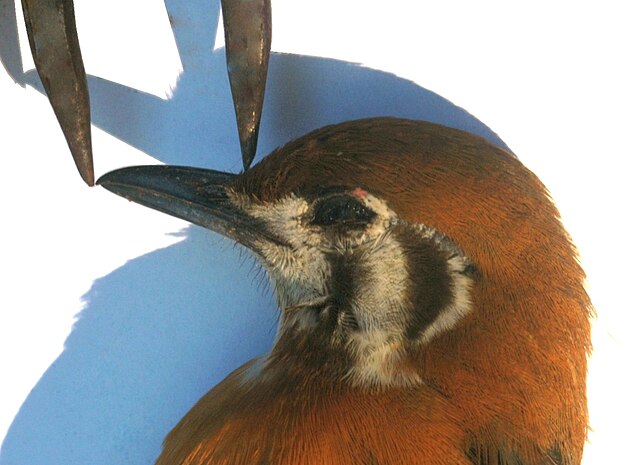The beak, bill, or rostrum is an external anatomical structure found mostly in birds, but also in turtles, non-avian dinosaurs and a few mammals. A beak is used for pecking, grasping, and holding, preening, courtship, and feeding young. The terms beak and rostrum are also used to refer to a similar mouth part in some ornithischians, pterosaurs, cetaceans, dicynodonts, anuran tadpoles, monotremes, sirens, pufferfish, billfishes and cephalopods.
The bony core of the beak is a lightweight framework, like that seen on this barn owl's skull.
A gull's upper mandible can flex upwards because it is supported by small bones which can move slightly backwards and forwards.
The sawtooth serrations on a common merganser's bill help it to hold tight to its fish prey.
A bird's culmen is measured in a straight line from the tip of the beak to a set point — here, where the feathering starts on the bird's forehead.
Turtles, or testudines, are reptiles of the order Testudines, characterized by a special shell developed mainly from their ribs. Modern turtles are divided into two major groups, the Pleurodira and Cryptodira, which differ in the way the head retracts. There are 360 living and recently extinct species of turtles, including land-dwelling tortoises and freshwater terrapins. They are found on most continents, some islands and, in the case of sea turtles, much of the ocean. Like other amniotes they breathe air and do not lay eggs underwater, although many species live in or around water.
Turtle
Head and neck of a European pond turtle
Sea turtles have streamlined shells and limbs adapted for fast and efficient swimming.
The red-eared slider has an exceptional seven types of color-detecting cells in its eyes.








